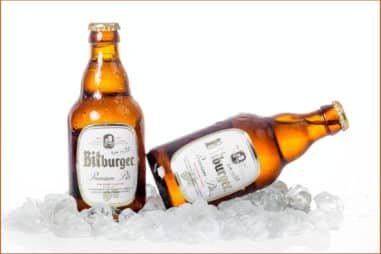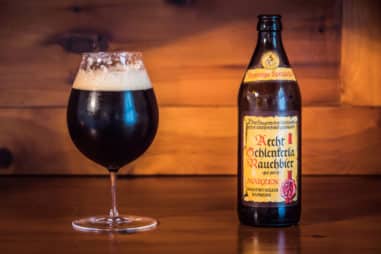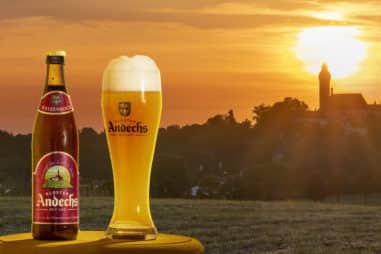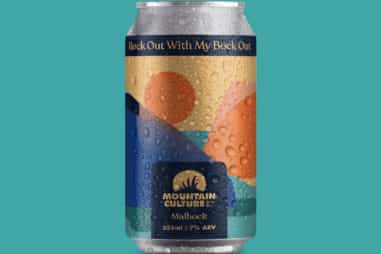What Makes an East Coast IPA?
What in the world is biotransformation and how does that relate to East Coast IPAs?
It all starts with the brewing process. Biotransformation isn’t as complicated as it sounds. It’s simply a process that happens when hops are added to East Coast yeast strains.
See – what makes an East Coast IPA is how and when the hops are used in the brewing process. East Coast IPAs are brewed through a technique known as dry hopping.
Dry hopping is when you add hops during fermentation. Some brewers will add hops during fermentation and the second fermentation, which is also known as double dry hopping.
Since fermentation happens at lower temperatures, this also creates the distinctive fruity and juicy flavor of East Coast IPAs.
Now that wasn’t so hard to understand, right? Biotransformation. Add that to your beer vocabulary. But if all this still sounds confusing, it might be better to explain East Coast IPAs by heading over to the West Coast.
What’s the Difference Between East Coast IPAs and West Coast IPAs?
For starters, West Coast IPAs are much “older” than East Coast IPAs. But don’t think of West Coast IPAs like the older sibling you have.
West Coast IPAs simply came first and gained popularity in the late 90s. Flavor-wise? Bitter.
In fact, with a West Coast IPA, you’re looking at the hoppiest and bitterest brews. Take a sip and you get an explosion of bitterness.
Yup, these guys are the bad boys in the IPA world. But they’re classy about it. And boy do West Coast IPAs love hops. In short, West Coast IPAs rock your world…bitter-ly. They make heartbreak bitterness look cute.
And they’re not afraid to show it. Apart from a West Coast IPA’s bitterness, you also get resinous, piney, and sometimes citrus flavors.
What about East Coast IPAs? If West Coast IPAs are bitter, think of East Coast IPAs as bittersweet.
These beers still have that hoppy, bitter game going but the malty sweetness doesn’t take the back seat. It’s more of a balance of sweet maltiness and bitterness. And that’s not all.
East Coast IPAs are smoother, juicier, fruitier, and have a stronger citrus kick. They don’t start with a bang of bitter like West Coast IPAs do. It’s more of sweet on the front end then bitter at the finish.
Brewing Process Differences Between West Coast and East Coast IPAs
Here’s where things get interesting.
Both West Coast and East Coast IPAs are top-fermented, which means brewing at higher temperatures.
Both use a generous amount of hops. What sets the East Coast from the West Coast IPAs apart is when and how the hops are used in the brewing process:
- West Coast IPAs: Hops are added during the kettle boil. Since hops are added during the boil, think of it the same way you brew tea. The heat extracts the bitterness you would taste in a West Coast IPA.
- East Coast IPAs: Hops are added during fermentation. Since fermentation is at a lower temperature, it doesn’t highlight the bitterness as much. What it does is bring out the citrus, floral, and tropical notes. Some of these include melon, stone fruit, citrus, and tropical fruit flavors.
Are East Coast IPAs Hazy?
Remember biotransformation? The result you get out of biotransformation is a juicy and hazy beer just like East Coast IPAs.
However, East Coast IPAs are not New England IPAs (NEIPA) and yet, a lot tend to think they are. NEIPAs are juicy and hazy, which is why they’re also called Hazy IPAs.
Now, here’s the truth: NEIPAs came after East Coast IPAs, so you could say NEIPAs wouldn’t be here if not for East Coast IPAs.
Does that make NEIPAs somewhat a son to East Coast IPAs? You could say that. East Coast IPAs are like the stepping stone to NEIPAs rise in popularity. But what about the flavor difference?
Well, NEIPAs are the hazy juice bombs. These guys have even more tropical fruit cocktail vibes than East Coast IPAs.
Is East Coast IPA Vegan?
Oof. Tough question. And the answer is…
Not quite. But here’s the good news. There are several East Coast IPAs that are vegan-friendly, such as:
- Garden State East Coast IPA
- Sawmill East Coast IPA
- Twisted Spike East Coast IPA
- 3rd Act It’s So Hazy I’m Gonna Die East Coast IPA
It’s worth noting that all the main ingredients of beer are vegan friendly: yeast, malt, hops, and water. However, breweries like to get creative and might add something like honey, for example, as an ingredient.
Another is clearing agents, specifically isinglass. Most cask-conditioned ales are clarified using isinglass, and that includes Guinness.
So how can you tell if a beer is vegan-friendly? You can use a site called Barnivore. You have the option to filter beers by Letter and by Veganosity.
Is Greene King East Coast IPA Vegan?
Greene King East Coast IPA is vegan-friendly! But here’s the twist.
Greene King East Coast IPA in a can or bottle is vegan-friendly; however, the cask version isn’t since it uses isinglass.
What exactly is isinglass? It’s a preservative made using collagen taken from fish bladder. In other words, Greene King is vegan-friendly depending on how you consume it.
If it’s from the can or bottle, you’re safe.
Who Brews East Coast IPA?
There are a good number of breweries today that make East Coast IPA, such as:
- Greene King Brewery
- Bell’s Brewery Inc.
- Creature Comforts Brewing Co.
- La Cumbre Brewing Co.
- Fat Head’s Brewery & Saloon
- Garden State Beer Company
- Steel Toad Brewery
- Ferry Ales Brewery
- Whalers Brewing Company
- Twisted Spike Brewing Company
- Sawmill Brewery
- Ferry Ales Brewery
- 3rd Act Brewery
Where Can I Buy East Coast IPA?
Your best options are websites online like Greene King, Sydney Brewery, The Beer Library, Drizly, Heritage Hops Brew, and surprisingly, online grocery store platforms such as Tesco and ASDA.
Finally, it’s worth checking out Untappd – a place where you can discover and share your favorite beer.








